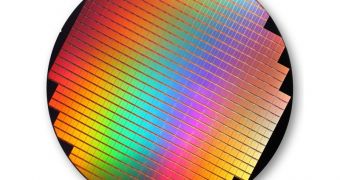IMFT is a joint venture between Intel and Micron, through which the two companies strive to bring about advancements in the area of flash storage. The joint venture already has a reputation for being the first to develop sub-40nm NAND, as well mass-producing it. More recently, the two companies further increased their reputation by introducing the next generation of NAND flash, namely 25nm wafers.
Solid state drives have been gaining popularity over the past years. This is mainly due to the significantly higher data transfer rates that such storage units can achieve. However, SSDs still have not been able to wrench the mainstream market from hard drives, mainly because the latter have a significantly larger storage capability. The new 25nm NAND flash from Intel and Micron will lessen the gap between the two, as it allows for the creation of SSD units that have both a larger storage capacity and a lower price.
“To lead the entire semiconductor industry with the most advanced process technology is a phenomenal feat for Intel and Micron, and we look forward to further pushing the scaling limits,” said Brian Shirley, vice president of Micron’s memory group. “This production technology will enable significant benefits to our customers through higher density media solutions.”
“Through our continued investment in IMFT, we’re delivering leadership technology and manufacturing that enable the most cost-effective and reliable NAND memory,” stated Tom Rampone, vice president and general manager, Intel NAND Solutions Group. “This will help speed the adoption of solid-state drive solutions for computing.”
When the 34nm NAND was launched, the flagship product was a 4GB (32Gbit) 2-bit-per-cell MLC NAND device. Its die size was 172mm2. 25Nm basically doubles the capacity of such a die size, which seems to point to SSDs that, while maintaining the same price as a 34nm, would have twice its storage capacity. IMFT is already sampling the 25nm NAND. Devices based on this new technology are expected to include Intel's third-generation X25-M drives, set to come in storage capacities of 160GB, 320GB and 600GB. This line of products is expected to arrive sometime during the fourth quarter.
Last year, IMFT pronounced its intention to develop 3-bit-per-cell 34nm MLC NAND chips but the arrival of 25nm practically makes such products unnecessary. On the other hand, there is the possibility that 3-bi-per-cell 25nm NAND will be developed because they can be a convenient choice for cheap or low-cycle USB sticks. Still, in solid state drives, 3-bit-per-cell NAND would not justify the compromise in performance and reliability. Actual mass production of 25nm NAND flash is currently set for Q2 2010.

 14 DAY TRIAL //
14 DAY TRIAL //